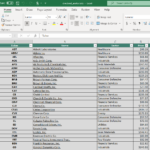As a stock’s nominal share price falls, what happens to its risk profile? The answer to this question has important implications for managing investor expectations and reducing portfolio turnover. Afterall, investors often deviate from their chosen long-term strategies due to emotional reactions to unanticipated market movements. These market-timing actions present their own form of risk, adding to the existing risk of unpredictable markets.
Some would argue that as a stock approaches the lower end of penny stock territory, volatility will moderate because there is an inherent threshold below which the price cannot drop. Others would contend that the stock will become more sensitive to market movements because market conditions dictate the survival of the company.
We investigated what happens to systematic risk and the total volatility of a stock when it becomes a penny stock, i.e., its price drops below $5 per share. The results may surprise you. We found that as a stock declines in value, it becomes more sensitive to market movements. In other words, its beta increases and its total volatility increases accordingly.
We pulled stock returns on all NASDAQ- and NYSE-listed firms going back 50 years. We examined stocks that during the 50-year period crossed the threshold of $1 a share, $2.50 a share, or $5 a share. We captured the instances when each stock crossed these thresholds for the first time. We then noted the beta of the stocks before the threshold crossovers and compared them to the same betas of the stocks two years after the crossover date.
The Findings
The first interesting finding is that when a stock dips below the $1 threshold, on average, its beta goes from 0.93 to 1.57. A beta greater than 1.0 means a stock’s price is more volatile than the overall market, i.e., its price swings more wildly. The opposite is true of a beta less than 1.0.
The jump in beta to 1.57 from 0.93 for the stocks that dipped below the $1 threshold represents a significant shift in risk profiles. In fact, it is statistically significant at 1%. At the $1 threshold, the average penny stock has much more systematic risk and total volatility. And this shift is across the board. Stocks with negative betas go from an average of -0.62 to 1.14. Stocks with betas between 0 and 1.0 go from 0.55 to 1.37. And stocks with betas higher than 1.0 go from 1.95 to 1.88.
What happens to systematic risk and the total volatility of a stock when it becomes a penny stock:
| Beta Before Price Drop | Beta 2 Years After Price Drop | |
| Average Price Drop Cutoff: $1/share | 0.93 | 1.57 |
| Beta below 0 | -0.62 | 1.14 |
| Beta between 0 and 1.0 | 0.55 | 1.37 |
| Beta higher than 1.0 | 1.95 | 1.88 |
| Beta Before Price Drop | Beta 2 Years After Price Drop | |
| Average Price Drop Cutoff: $2.50/share | 0.90 | 1.56 |
| Beta below 0 | -0.55 | 1.01 |
| Beta between 0 and 1.0 | 0.52 | 1.27 |
| Beta higher than 1.0 | 1.90 | 1.94 |
| Beta Before Price Drop | Beta 2 Years After Price Drop | |
| Average Price Drop Cutoff: $5/share | 1.00 | 1.07 |
| Beta below 0 | -0.56 | -0.51 |
| Beta between 0 and 1.0 | 0.47 | 0.50 |
| Beta higher than 1.0 | 2.02 | 2.17 |
The results highlight that this drastic increase in risk (volatility) is entirely due to increases in systematic risk, i.e., movement with the market index. Notably, these results are not driven by a reversion to the mean over time in betas.
At the high end of our study, we examined when stocks cross the $5 a share barrier. The results look quite different. Before a stock crossed the $5 threshold, on average, its beta is 1.0 and afterward it is 1.07. The other beta tiers at $5 a share showed the same results. This affirms that the $1 threshold results are truly due to the stock entering penny stock territory.
The results support the idea that penny stocks become much more risky (higher volatility) as they approach the zero-price barrier and that this risk is due to increases in systematic risk (increased sensitivity to market movements).
If you liked this post, don’t forget to subscribe to the Enterprising Investor.
All posts are the opinion of the author. As such, they should not be construed as investment advice, nor do the opinions expressed necessarily reflect the views of CFA Institute or the author’s employer.
Professional Learning for CFA Institute Members
CFA Institute members are empowered to self-determine and self-report professional learning (PL) credits earned, including content on Enterprising Investor. Members can record credits easily using their online PL tracker.















